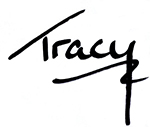
Slightly off the beaten track today. At Stories Rule Press, we offer a formatting service to authors: Give us your manuscript and we will produce validated ePub and Mobi files that you can upload to the retail sites without issue. We’ll also do print layouts.
But recently there’s been a rash of manuscripts come in for formatting that were so badly formatted, that it took more time to clean them up than it took to create ePubs (and we don’t use the plug-and-play apps like Vellum, either!)
If your ePubs, when you read them, just don’t look “right”, this might be why.
Following the suggestions, below, will give you a “clean” MS Word file that compiles to ePub and Mobi without mysterious blank pages and extra lines in it, and with chapter headings properly formatted. If you use compilers such as Jutoh, Atticus or Vellum, the clean file will also reduce bad results when you import to those apps.
If you publish to Smashwords, the cleaning list will give you a file that passes through their meat-grinder without issues.
If you pay for someone else to compile your books, giving them a clean Word file will make them very happy and you will get your ebooks returned a lot faster.
Editors at traditional publishing houses will also appreciate a well-formatted Word file, for the same reasons you or your compiler will.
Most of the cleaning up requires the use of the Advanced Search and Replace function in Word. If you’re not familiar with the Search & Replace dashboard check out Tom Corson Knowles’ video for Mac users, or https://nutsandboltsspeedtraining.com/how-to-find-and-replace-in-word/ for Windows users.
Set Language to English (US)
Non-US authors should consider publishing in US English to avoid negative reviews and reader unhappiness.
If you choose to publish in your country’s version of English, consider adding a note at the front of the book, letting the reader know this.
Search all xxx’s and replace
If you leave xxx’s or other marks in your manuscript to flag your attention for later research, now is the time to search for all of them and replace them with the correct spelling/reference/fact.
Read through slowly and clean and tweak
Last slow read through to catch all grammar changes, typos, etc. You can also have Word read the file to you–issues will leap out at you when it is read back to you.
Change text from MS Word default to book text formatting
If you don’t change anything about Word’s styling when you write your books, then you’ve likely got paragraphs in single line spacing, with a blank space after them. Honestly, this drives formatter nuts.
Select all your text and format the style so that paragraphs are indented on the first line, and have no space before or after them, as they are laid out in a book.
Leave the right margin ragged rather than justifying it.
Single and double quote marks — be sure they are curly
“Curly” quotes are formatted to enclose the speech, while “straight” quotes are the same for front and back. Curly quotes give a better reader experience, and most bookseller platforms require them.
In MS Word, make sure your options are set to replace quotes with smart quotes, then search and replace all single quote marks, then all double quote marks. They will automatically format themselves, when you do.
Tabs. Search document and remove any.
Tabs in your document can make some ebook compilers crash, or give error readings and refuse to import your Word file. Use the Advanced Search functions (CNTL/CMD+”h”) to find all tabs and remove them (they sprout mysteriously, so even if you’re sure you don’t have any in your document, search anyway).
Em dashes: convert double dash to EM dash.
A double dash — is different from a hyphen-called an En dash, and different again from an Em dash—of which this is one.
When you end sentences and speeches abruptly, “Hey—” she began, for example—these are where Em dashes should be used.
If you use double dashes when you’re writing your first draft, now is the time to replace them with Em dashes. Search and replace the double dashes using the Advanced Search function (CNTL/CMD+”h”)
Search all Em dashes and remove spaces from either side.
Em dashes should not have spaces on either side of them. Use the Advanced Search and Replace function (CNTL/CMD+”h”) to find and remove those spaces.
Search for and remove trailing spaces at end of paragraphs
If you switch on the show/hide formatting marks (CNTRL/CMD+SHFT+8), you will see that many of your paragraphs have spaces trailing the last letter, before the paragraph marker.
These extra spaces are the reason why your compiled ebook may have extra blank lines and sometimes whole blank pages where you didn’t put them – the extra spaces can drop down to the next line…or the next page. Removing them removes the problem.
Search for and remove initial spaces at front of paragraphs
This will further decrease unexpected formatting in your ebooks. You’ll be surprised by how many extra spaces creep into the beginnings of your paragraphs.
Search for all double spaces and replace with single spaces
Most trained typists learned to hit the space bar twice after a period. I learned in high school and I am utterly unable to stop putting in the two spaces. However, in ebooks, the double space can mess up your formatting and isn’t needed for the reading experience.
Search and replace double spaces with one space, and keep repeating the search until you get zero results—which has the effect of removing a lot of extra spacing everywhere that could give you unexpected results.
Chapter numbering — check that chapter numbers are sequential and not repeated or omitted.
Oh yeah, we do this all the time. Mis-numbered chapters are embarrassing, especially when a quick check at this stage will avoid the issue.
Check that all your Chapters are formatted in Heading 1 style
While you’re working through each chapter heading, check that the chapter title and the title for each section in your book, including the front and back matter, is formatted in Heading 1 style (for a tutorial on headings & styles, see here). This will make sure that each chapter and section appears in the automated table of contents that ebooks generate.
Center your headings using the center command, don’t tab or add in spaces to center them. And if Heading 1 doesn’t automatically center, then update it so that all headings 1s (your chapter headings) are centered automatically.
It also helps the ebook compiler apps figure out where the chapters and sections start and end, giving you a trouble-free compile.
Final spell check
Even if you’ve spell checked already, do it again now. If you’ve accidentally removed spaces between words, or messed up your hyphens/em dashes, a spell check will find them. This will assure you that everything is okay.
You’re done.
Save and send to your editor or formatter.
And get on with the next book.

Write More, Faster Than Ever Before | Are You Prolific?
Editing Your Next Novel? Mark Posey offers fast, writer-friendly edits with zero drama. Check out services »

Wonderful column, Tracy! Thank you. I type my stories on the Apple-only app Ulysses, then export to Word, then finally to Vellum, stopping along the route to run my chapters through Google Docs for its own spell and grammar check. So far the process has served me well, although I have had to correct a few quote marks manually once in a while.
Thanks, Meg:
I think there’s as many way to format a book as there are authors! But the cleaning up of the manuscript before it is converted will, I suspect, enhance any formatting.
That’s a lot of exporting you’re doing there!
Tracy